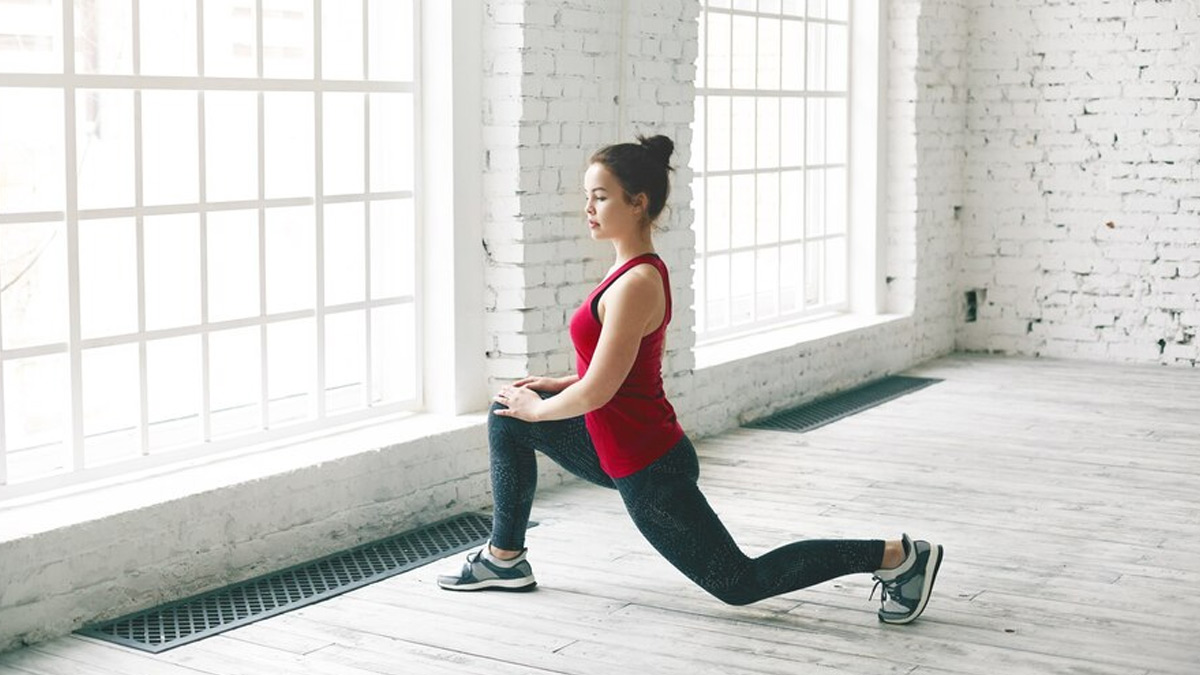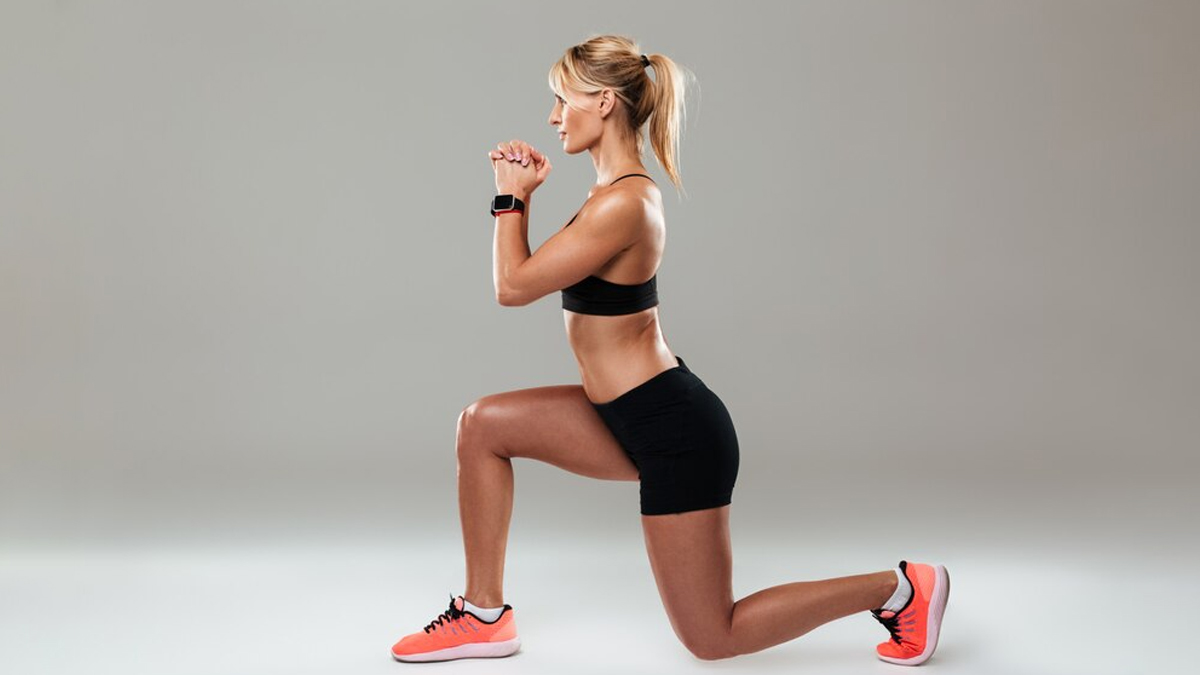
Are you aiming to strengthen multiple muscle groups, such as core, hips, and glutes? If yes, look no further than walking lunges. Walking lunges target the major muscles in your lower body, helping to build stronger and more defined legs. The unilateral nature of walking lunges requires you to engage your core and maintain balance, improving your overall stability and coordination. We spoke to our expert Ishaan Arora, Karnal-based Body Building India Certified Fitness Trainer, who explained the benefits of walking lunges and how to do it correctly.
Table of Content:-
Understanding the Correct Technique

Executing walking lunges with proper form is crucial to maximise their effectiveness and minimise the risk of injury. Follow these steps to perform walking lunges correctly, as listed by the expert:
- Place your feet hip-width apart and relax your shoulders while standing tall.
- Step forward with your right foot, ensuring that your knee remains directly above your ankle.
- Next, bend your knees to lower your body. Aim to form two 90-degree angles with your front and back legs, with your back knee hovering just above the floor.
- Push off your right heel to return to the starting position as you bring your left foot forward into a lunge position.
- Continue alternating legs as you walk forward, maintaining proper form with each lunge.
Also Read: Weight Loss Workout: Expert Explains The Right Way To Do Jumping Lunges For Losing Weight
Benefits of Walking Lunges

Strengthens Lower Body Muscles
“Walking lunges work the muscles in your lower body, such as your calves, quadriceps, and hamstrings. Hence, you can build strength and endurance in these muscle groups by consistently practising this exercise in your routine”, said Arora.
Enhances Core Stability
Walking lunges not only strengthen your lower body but also engage your core muscles to maintain balance and stability throughout the movement. A strong core is essential for supporting your spine and preventing injuries, making walking lunges an effective exercise for overall core strength.

Improves Functional Movement Patterns
Did you know performing walking lunges regularly can help you reduce the risk of strains and imbalance? Also, it becomes easier to perform everyday activities, such as climbing stairs, walking, and running. This is because walking lunges mimic a natural walking motion, they help improve your body's functional movement patterns.
According to a 2019 study, lunges play a significant role in various strength-building and injury-prevention regimens, including those designed to prevent Anterior Cruciate Ligament (ACL) injuries.
Also Read: Exercise-Post Oxygen Consumptions: Expert Explains Its Fitness Benefits And How To Achieve It?
Boosts Cardiovascular Health
Arora said, “Performing walking lunges in a continuous walking motion elevates your heart rate, turning this exercise into a cardiovascular workout as well. Incorporating lunges into a High-Intensity Interval Training (HIIT) routine can effectively improve cardiovascular fitness and promote fat loss.”
Enhances Flexibility and Range of Motion
Maintaining proper form during walking lunges requires flexibility in your hip flexors, quadriceps, and hamstrings. Regularly practising this exercise can help improve flexibility and increase your range of motion, reducing the likelihood of tight muscles and joint stiffness.
Expert Tips To Follow
To make the most of your walking lunges and minimise the risk of injury, keep the following tips in mind:
- Focus on Control: Perform each lunge with control, avoiding sudden movements or jerking motions.
- Keep Your Torso Upright: Maintain an upright posture throughout the exercise to engage your core and protect your spine.
- Mind Your Knee Alignment: Ensure that your knees stay aligned with your ankles and don't extend past your toes to prevent undue stress on the joints.
- Start Slowly: If you're new to walking lunges, start with a few repetitions and gradually increase the intensity as your strength and endurance improve.
[Disclaimer: This article contains information provided by an expert and is for informational purposes only. Hence, we advise you to consult your expert before starting any exercise regimen, especially if you are dealing with any injury or health issues.]
Also watch this video
How we keep this article up to date:
We work with experts and keep a close eye on the latest in health and wellness. Whenever there is a new research or helpful information, we update our articles with accurate and useful advice.
Current Version